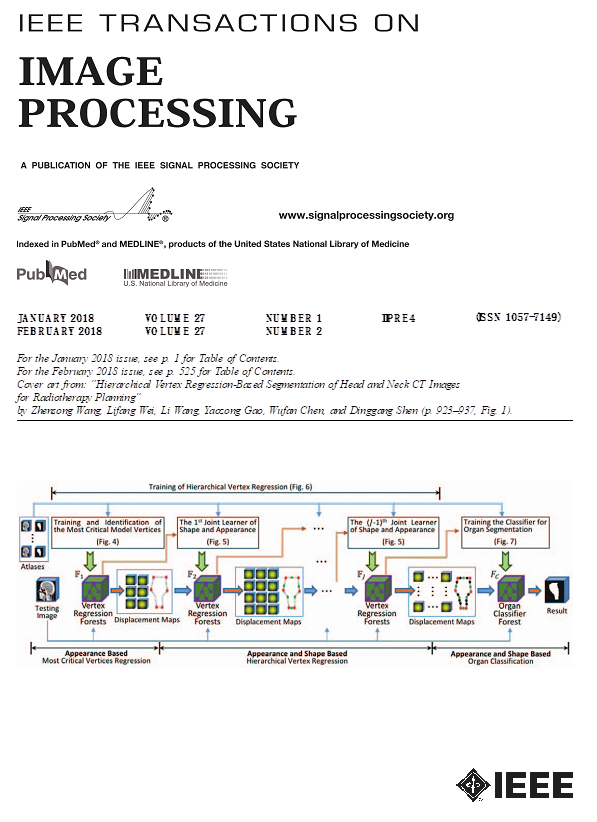Dual-Space Topological Isomorphism and Maximization of Predictive Diversity for Unsupervised Domain Adaptation.
IF 13.7
1区 计算机科学
Q1 COMPUTER SCIENCE, ARTIFICIAL INTELLIGENCE
引用次数: 0
Abstract
Most existing unsupervised domain adaptation methods rely on explicitly or implicitly aligning the features of source and target domains to construct a domain-invariant space, often using entropy minimization to reduce uncertainty and confusion. However, this approach faces two challenges: 1) Explicit alignment reduces discriminability, while implicit alignment risks pseudo-label noise, making it hard to balance structure preservation and alignment. 2) Sole reliance on entropy minimization can lead to trivial solutions in UDA, where all samples collapse into a single class. To address these issues, we propose Dual-Space Topological Isomorphism and Maximization of Predictive Diversity (DTI-MPD). Topological isomorphism is a continuous, bijective mapping that preserves the topological properties of two spaces, ensuring the global structure and relationships of data remain intact during alignment. Our method aligns source and target domain data in two independent spaces while balancing the effects of entropy minimization through predictive diversity maximization. The core of dual-space topological isomorphism lies in establishing a reversible correspondence between the source and target domains, avoiding information loss during alignment and preserving the global structural and topological characteristics of the data. Meanwhile, predictive diversity maximization mitigates the class collapse caused by entropy minimization, ensuring a more balanced predictive distribution across categories. This approach effectively overcomes the aforementioned issues, enabling better adaptation to new data. Extensive experiments demonstrate that our method achieves state-of-the-art performance on multiple benchmark datasets, validating its effectiveness.双空间拓扑同构与无监督域自适应预测多样性最大化。
大多数现有的无监督域自适应方法依赖于显式或隐式地对齐源域和目标域的特征来构建域不变空间,通常使用熵最小化来减少不确定性和混淆。然而,该方法面临两个挑战:1)显式对齐降低了可判别性,而隐式对齐存在伪标签噪声,难以平衡结构保留和对齐。2)在UDA中,仅仅依赖熵最小化可能导致琐碎的解决方案,其中所有样本都崩溃为单个类。为了解决这些问题,我们提出了双空间拓扑同构和预测多样性最大化(DTI-MPD)。拓扑同构是一种连续的、双射的映射,它保留了两个空间的拓扑特性,确保数据的整体结构和关系在对齐过程中保持完整。我们的方法在两个独立的空间中对齐源域和目标域数据,同时通过预测多样性最大化来平衡熵最小化的影响。双空间拓扑同构的核心在于在源域和目标域之间建立可逆的对应关系,避免对齐过程中的信息丢失,保持数据的全局结构和拓扑特征。同时,预测多样性最大化减轻了由熵最小化引起的类崩溃,确保了更平衡的跨类别预测分布。这种方法有效地克服了上述问题,能够更好地适应新数据。大量的实验表明,我们的方法在多个基准数据集上达到了最先进的性能,验证了其有效性。
本文章由计算机程序翻译,如有差异,请以英文原文为准。
求助全文
约1分钟内获得全文
求助全文
来源期刊

IEEE Transactions on Image Processing
工程技术-工程:电子与电气
CiteScore
20.90
自引率
6.60%
发文量
774
审稿时长
7.6 months
期刊介绍:
The IEEE Transactions on Image Processing delves into groundbreaking theories, algorithms, and structures concerning the generation, acquisition, manipulation, transmission, scrutiny, and presentation of images, video, and multidimensional signals across diverse applications. Topics span mathematical, statistical, and perceptual aspects, encompassing modeling, representation, formation, coding, filtering, enhancement, restoration, rendering, halftoning, search, and analysis of images, video, and multidimensional signals. Pertinent applications range from image and video communications to electronic imaging, biomedical imaging, image and video systems, and remote sensing.
 求助内容:
求助内容: 应助结果提醒方式:
应助结果提醒方式:


